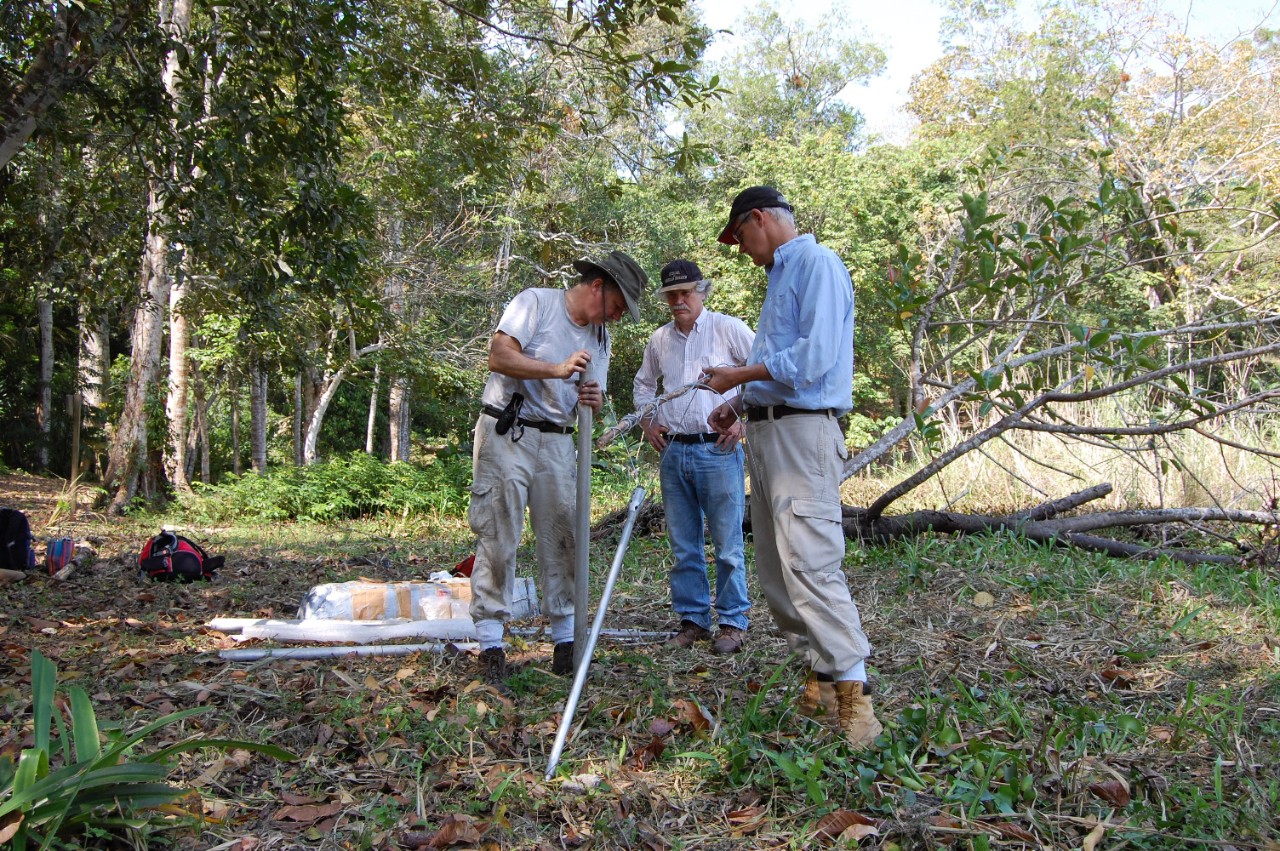
WVXU: UC finds pollution in ancient Maya reservoirs
The director of UC's Center for Field Studies talks about Tikal in Guatemala
WVXU's Cincinnati Edition spoke to University of Cincinnati biologist David Lentz about an exciting UC study that is shedding light on the fate of an ancient Maya city.
A diverse team of UC anthropologists, geographers, botanists, biologists and chemists collaborated on a study published in the Nature journal Scientific Reports that found toxic levels of pollution in ancient reservoirs in Tikal, an ancient Maya city in Guatemala.

David Lentz, executive director of UC's Center for Field Studies, collaborated on a new study of the ancient Maya in Tikal, Guatemala. Photo/Joseph Fuqua II/UC Creative + Brand
Lentz, executive director of UC's Center for Field Studies, told Cincinnati Edition that UC's findings are helping to explain why people eventually left the city, which had thrived for hundreds of years between the third and ninth centuries B.C.
UC sampled sediment at 10 reservoirs within the city and conducted an analysis on ancient DNA found in the sediment. The results showed evidence of toxic cyanobacteria that likely would have sickened anyone who drank the water.
Likewise, UC researchers also found toxic levels of the heavy metal mercury in the water. Lentz said the mercury likely came from cinnabar, a red-colored mineral the ancient Maya mined as a paint and pigment. During heavy storms, the pigment would have been washed into the reservoirs, contaminating the water.
"Even a little bit of mercury can be very dangerous," Lentz said.
UC's Maya research is featured in a new exhibit, Lessons from the Maya, on display now through January at the Cincinnati Museum Center.
Featured image at top: UC researchers Nicholas Dunning, left, Vernon Scarborough and David Lentz set up equipment to take sediment samples during their field research at Tikal. Photo/Liwy Grazioso Sierra

A temple at the ancient Maya city of Tikal rises above the rainforest in Guatemala. Photo/David Lentz
Impact Lives Here
The University of Cincinnati is leading public urban universities into a new era of innovation and impact. Our faculty, staff and students are saving lives, changing outcomes and bending the future in our city's direction. Next Lives Here.
Stay up on all UC's COVID-19 stories, read more #UCtheGood content, or take a UC virtual visit and begin picturing yourself at an institution that inspires incredible stories.
Related Stories
How aerospace is turning to trustworthy AI
January 6, 2026
UC College of Engineering and Applied Science graduate Lynn Pickering talks to the Ohio Federal Research Network about her research into artificial intelligence and the future of AI in aerospace engineering.
UC's art collection on display at the Contemporary Arts Center
January 5, 2026
University of Cincinnati leaders joined WVXU's Cincinnati Edition to talk about the university’s 200-year-old art collection, a new exhibition at the Contemporary Arts Center and the release of a companion book exploring the collection’s role in education and public engagement.
UC faculty and staff among Rising Star leadership honorees
January 5, 2026
Two UC faculty and staff members are among this year's Rising Star leadership program sponsored by YWCA Greater Cincinnati. Kelli Beecher, assistant professor in the UC College of Nursing, and Brittany Bibb, assistant director of programs and operations in the UC Division of Student Affairs, are among the emerging leaders of 2026. They were featured in the publication Movers & Makers.
